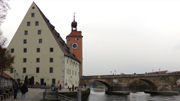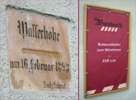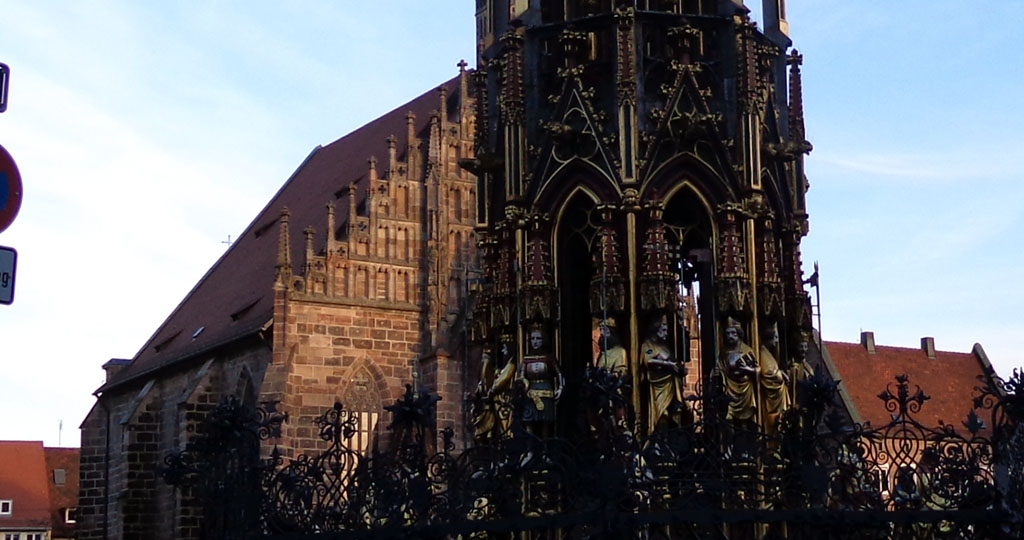Our first stop in Germany, or more properly, Bavaria, the old town of Regansburg. It began as a Roman fortress around 179AD and for many years, at least until the late 15th century, it was an important and wealthy trading centre.
Between 1135 and 1146, the Stone Bridge across the Danube was built at Regensburg. This bridge opened major international trade routes between northern Europe and Venice, and this began Regensburg's golden age as a residence of wealthy trading families. Regensburg became the cultural centre of southern Germany and was celebrated for its gold work and fabrics. (Wikipedia)
I was looking forward to visiting Regansburg, not for the history or the churches, but for the wurst (sausages). This little "old" restaurant serves wurst (sausages),


 sauerkraut and beer, although you can order a few other things. Old? Various sources suggest it started in the 1200s or perhaps even earlier. It's been rebuilt at least twice after destructive fires. While the others went on a guided walking tour of Regansburg I stayed back and then ventured out in the light rain - a quest for the best wurst, perhaps the best in Europe let alone Germany. Situated on the banks of the Donau river, beside the Bruckturm museum (1600s), and next to the Steinerne Brücke (Stone Bridge, 1200s). There is a small
sauerkraut and beer, although you can order a few other things. Old? Various sources suggest it started in the 1200s or perhaps even earlier. It's been rebuilt at least twice after destructive fires. While the others went on a guided walking tour of Regansburg I stayed back and then ventured out in the light rain - a quest for the best wurst, perhaps the best in Europe let alone Germany. Situated on the banks of the Donau river, beside the Bruckturm museum (1600s), and next to the Steinerne Brücke (Stone Bridge, 1200s). There is a small


 canopied, seating area outside, and a smaller seating area inside. There's a tiny doorway right next to the grill where you can get some food "mitnehmen" (to go). I had 2 wurst in a bread roll mit sauerkraut und their own sweet mustard. Simple place, simple food, great taste - it was well worth the 1/2 mile walk. And now for a little tourist humour.
canopied, seating area outside, and a smaller seating area inside. There's a tiny doorway right next to the grill where you can get some food "mitnehmen" (to go). I had 2 wurst in a bread roll mit sauerkraut und their own sweet mustard. Simple place, simple food, great taste - it was well worth the 1/2 mile walk. And now for a little tourist humour.
Denis, Hilda & Heather had left the walking tour to do some window shopping on their own and they wandered down a few twisty streets before they stopped for some refreshing Bavarian beer. Now it was time to return to the Amacerto, remember the cloudy sky the light rain... Of course they got "slightly" lost. They stopped several people and tried to describe the town square they were looking for but no one seemed to know or understand. Eventually they found their own way. Later on the Amacerto, while reliving their adventure over a glass of wine, Heather sat back laughed and said; "Why didn't we simply show them the pictures of the square in our camera - doh!!"
|
 Germany
Currency is the €uro
Germany
Currency is the €uro 

